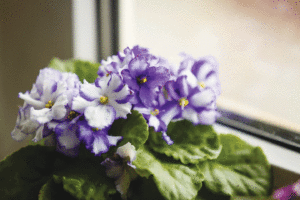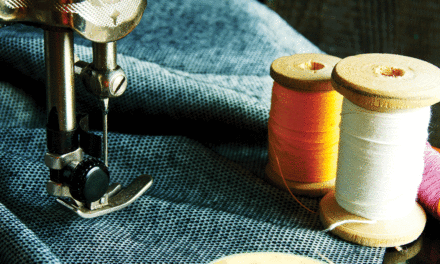
A window with western or southern exposure is a good option for keeping African violets well lit but not in direct light for long periods.
Routinely ranking as one of the most popular houseplants, African violets are one of the bright spots in a month that often reaches the peak of winter dreariness.
They feature flowers nearly all year and are relatively easy to care for since they prefer the same comforts of people in their own home.
In a lot of cases, they help usher in young gardeners, with a parent or grandparent passing down their knowledge, enthusiasm and plants to care for.
“That’s definitely how some people got into or get back into it,” said Louise Thompson, owner of Moonlight Nursery in Millsboro, Del., who grows more than 300 varieties of African violet.
Through an online store, she said her prime season for shipping leaf cuttings for growers to propagate plants runs from mid-March to November.
Thompson said she grew them with her mother and while she now focuses on unique varieties sought after by collectors, she touts them as a great houseplant to have.
Know, however, that “easy to care for” does not mean “care free.”
African violets need a space with substantial light but not direct or bright light.
For best results, place your violets in a window where they will receive light most of the day, according to Optimara Violets, considered the world’s largest source for African violets. A window with western or southern exposure is a good option.
Adjust your blinds or use a sheer curtain to filter out some of the light.
Like their human caretakers, the plants prefer a temperature near 70 degrees F, not below 60 degrees and not above 80 degrees. Moist air is key, too, so if you keep getting chapped lips in your home, it’s a good sign it’s too dry for you and the plants.
With adequate humidity, the plants don’t need very frequent watering, only enough to keep the soil moist but the roots not constantly wet.
Regular feeding is important to keep the plant flowering. Thompson dilutes a basic balanced fertilizer to a quarter-strength and adds some every time she waters.
While many sources advocate watering from the bottom of the pot to ward off leaf damage, Thompson and others say it’s not absolutely necessary, so long as the water is room temperature and wet leaves aren’t under bright light. That will certainly lead to leaf spotting.
Thompson said pot size can be one thing that trips up growers. She recommends using a pot that is about one-third the size of diameter of the leaf spread.
Repotting once or twice a year also helps the plant thrive as well.
“They definitely prefer that,” Thompson said. “It keeps the soil fresh and the pH in a good range.”





